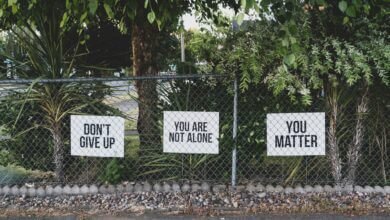
- Definition of Mental Health
- Key Components of Mental Health
- The Role of Community in Mental Health
- A few Advantages of Supportive Community
- Influence on mental health on individual life
- Relationships
- Creating a Supportive Community for Better Mental Health
- Enable Awareness and Education
- Encourage Social Connections
- Mental Health Resources
- Inclusivity and Diversity
In the recent years, dimensions of health have been recognized with one of them being mental health. The interaction of mental health with the community is a salient dimension that will impact on the quality of life of a person. This paper discusses deep interdependencies that exist within mental health and community life for an individual against the backdrops that provoke support and well-being in the environment.
Definition of Mental Health
Mental health is a condition of one’s emotional, psychological, and social well-being. It affects how people think, feel, and act and is responsible for their capacity to handle stress, relate to others, and make choices. While mental health is an important aspect of anyone’s life, it is all the more so for everyone, not only kids but also adults.
Key Components of Mental Health
Emotional Well-Being: Understanding and managing of emotions
Psychological Well-Being: Being in a state of positive attitude, coping mechanisms, and resilience.
Social Well-Being: Building and maintaining healthy relationships with family, friends and having a sense of connectedness.
The Role of Community in Mental Health
Community plays a vital role in determining mental health. A supportive community gives people a feeling of belonging, safety, and identity. It encourages social interactions and provides a place where individuals feel appreciated and accepted.
A few Advantages of Supportive Community
Emotional Support: Communities can provide the emotional support one needs and is crucial for mental stability. They can lend an ear and offer advice in a caring way to friends, family, and members of the community.
Social Interactions: Normal social interactions help to not feel lonely and isolated. Interactions promote mental well-being and a sense of belonging.
Resourcfuleness: Communities also provide connections to such resources as mental health care, support groups, and recreation resources that may improve the overall health of an individual
Group Resilience: A community can collectively survive an adversity situation and restore their normal status by providing a shared support mechanism.
Influence on mental health on individual life
Mental health contributes hugely to various spheres of one’s life, from his physical health to relationships and on to productivity. Poor health can lead to mental problems while boosting good mental health and improving an overall quality of life.
Mental health and physical health are interdependent. Mental health problems either could or have been causing low physical health, with consequences such as chronic heart diseases, diabetes, and obesity. Mental health can also facilitate the adoption of healthy behaviors and bolster good physical health outcomes.
Relationships
Mental health is directly related to relations. Good mental health will lead to the building of healthy and supportive relations. A person then will be able to develop good communication, empathy with others, and constructive conflict-solving skills. Conversely, bad mental health will lead to the built-up of disharmony relations, resulting in numerous misunderstandings and conflicts.
Mental health is positively associated with productivity and performance in both personal and professional domains. People with good mental health are able to focus, have intrinsic motivations running, and manage stress. This implies that such people fit well in the workplace, school, or any other setup where they are part of. Poor mental health, on the other hand, may reflect low productivity, absenteeism, and poor performance of cognitive functions.
Creating a Supportive Community for Better Mental Health
Creating a supportive community environment is necessary to foster good mental health. Here are a few strategies of building and maintaining the same supportive community:
Enable Awareness and Education
Creating awareness of mental health issues and educating other responsible community members will reduce the stigma, under which a number of discussions will be initiated. Awareness can be created through different community programs, workshops, and campaigns.
Encourage Social Connections
Organizing community events, clubs and groups fosters social interactions and meaningful relationships. Volunteerism and participation in community activities are likely to develop social ties.
Mental Health Resources
Mental health resources such as counseling services, support centers and crisis intervention must be given for everyone in the community. Communities should also advocate for affordable and accessible mental health care.
Inclusivity and Diversity
Flourishing of mental health is possible, forming a community considered inclusive and valued by diversity. Acceptance and understanding can be one of the ways or one of the things that can bring about an affirmative and harmonious environment for different cultures, backgrounds, and perspectives.
Mental health and community support are interrelated factors that influence individual well-being. A good community affects mental health for an individual by providing emotional support, social connection, resources, and building resilience. Mental health, on the other end, interacts with physical health, relationships, and one’s ability to be productive. Communities can further improve mental health towards better well-being through awareness, social connection, and access to resources and inclusivity for members.





2 Comments